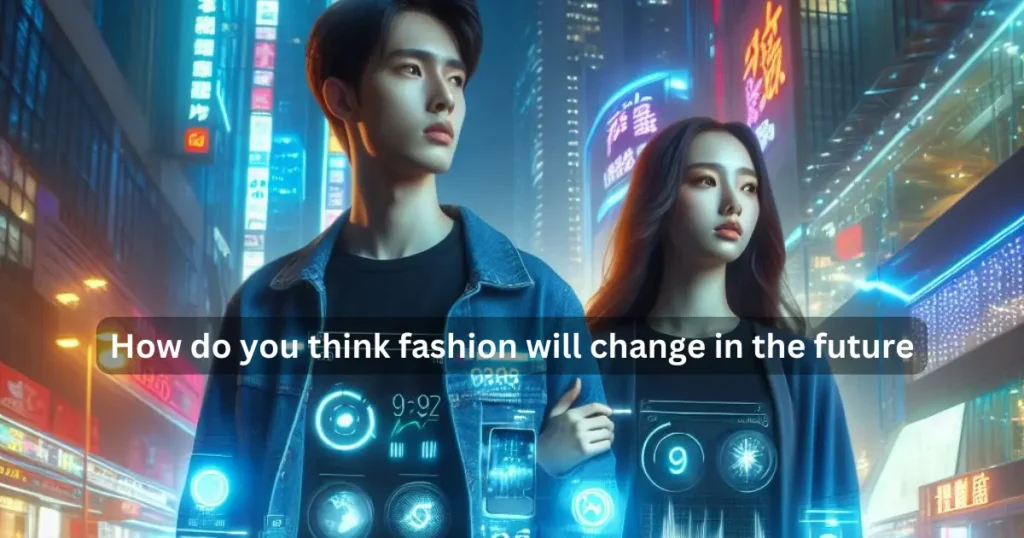1. Introduction
Fashion is a vibrant tapestry woven from the threads of culture, technology, and individual expression. As we step into the future, the evolution of fashion is not merely a reflection of our desires but a canvas where societal shifts, technological marvels, and environmental consciousness converge. Join us on a journey through the intricate and dynamic landscape that holds the promise of transforming how we perceive and interact with fashion.
2. Historical Trends
Our fashion choices today are a rich tapestry woven from the threads of history. The 1920s introduced the world to the freedom of flapper dresses, reflecting the spirit of post-war exuberance. Fast forward to the 1990s, where minimalism took center stage, emphasizing simplicity and functionality. These historical echoes influence contemporary designers, as they draw inspiration from the past while pushing boundaries into uncharted territories.
3. Technology and Fashion
In the digital age, technology is not just an accessory; it’s a transformative force reshaping every stitch of the fashion narrative. 3D printing revolutionizes the very process of creation, allowing designers to sculpt garments with unprecedented precision. Virtual try-on experiences have transcended gimmickry, providing consumers with a personalized and immersive online shopping adventure. The fusion of technology and fashion is not a distant dream but a vibrant reality defining the industry’s evolution.
4. Sustainable Fashion
Sustainability is no longer a choice but a necessity for the fashion industry. Beyond the allure of eco-friendly materials, circular fashion models are gaining prominence, fostering a culture where garments are designed with a lifecycle in mind. From upcycled treasures to the reduction of waste, the embrace of sustainability isn’t just a trend – it’s a seismic shift towards a more responsible and environmentally conscious fashion future.
5. Influences of Cultural Shifts
Fashion is a mirror reflecting the values and aspirations of society. Cultural shifts, from body positivity movements to discussions about cultural appropriation, echo in the choices we make in clothing. The fashion runway is not just about showcasing styles; it’s a platform for dialogue, challenging norms, and celebrating diversity. As society evolves, so does the language of fashion.
6. Rise of Digital Fashion
The digital realm is not a mere extension of the fashion industry; it’s a parallel universe where creativity knows no bounds. Digital fashion extends beyond avatar dress-up; it’s a medium for self-expression, enabling users to explore styles without the constraints of the physical world. Virtual garments and NFTs mark a paradigm shift where ownership and identity intertwine in the digital landscape, paving the way for an entirely new era in fashion consumption.
7. Customization and Personalization
The democratization of fashion is underway, with customization leading the charge. The days of one-size-fits-all are waning as consumers crave uniqueness. Made-to-order clothing is not just a luxury; it’s an expectation. Personalized styling algorithms sift through the digital data troves, curating looks that resonate with individual tastes. In the future, fashion isn’t just something you wear; it’s an extension of your identity.
8. Impact of Artificial Intelligence
Artificial Intelligence isn’t an abstract concept but a silent partner in the fashion world’s creative process. Imagine an AI that understands your style preferences, anticipates trends, and curates a shopping experience tailored just for you. From design to customer service, AI is seamlessly integrated, enhancing efficiency and personalization in ways that redefine the consumer experience.
9. Changing Consumer Behavior
Consumer behavior is undergoing a profound transformation. The rise of social media has turned every fashion choice into a statement, an opportunity for self-expression. Conscious consumers seek not only style but also ethical practices and authenticity. Fashion, once dictated by the runway, is increasingly shaped by the collective voice of a socially aware audience.
10. Environmental Awareness
The fashion industry’s environmental impact is under scrutiny like never before. The future is not just about sustainable materials but a comprehensive commitment to ethical and eco-friendly practices. Circular fashion initiatives aim to minimize waste, with designers and consumers alike recognizing the need for a more responsible approach to clothing production and consumption.
11. Integration of Virtual Reality
Virtual Reality isn’t a gimmick but a game-changer in the fashion industry. Step into the virtual world where fashion shows become immersive experiences, and augmented reality mirrors redefine the boundaries between online and offline shopping. The integration of VR is not just a technological feat but a catalyst for transforming how we engage with fashion in the digital age.
12. Innovative Materials and Textiles
Fashion’s palette is expanding with the introduction of innovative materials and textiles. Picture garments crafted from bio-fabrics that blur the line between nature and design. Smart textiles offer functionality beyond aesthetics, responding to environmental changes and user preferences. The future of fashion is not just about what we wear but the extraordinary materials that adorn our bodies.
13. Gender Fluidity in Fashion
Fashion is breaking free from traditional gender norms, embracing a spectrum of identities. The future runway is inclusive, featuring designs that transcend stereotypes and celebrate individual expression. Clothing becomes a form of art that resonates with the diverse and fluid nature of human identity.
14. Collaborations and Cross-Industry
Fashion is no longer confined to ateliers; it’s a collaborative canvas where artists, musicians, and technologists converge. Witness the fusion of creativity as fashion houses join forces with diverse industries, creating collections that transcend the conventional and redefine the boundaries of artistic expression.
15. Fast Fashion vs. Slow Fashion
The dichotomy between fast and slow fashion is not just a debate; it’s a reflection of our values. Fast fashion offers quick trends but raises questions about environmental impact and ethical practices. Slow fashion, on the other hand, emphasizes longevity and sustainability. The choice between the two isn’t just about style; it’s a conscious decision that shapes the industry’s future.
16. Cultural Diversity and Inclusivity
The runway is no longer a showcase for a select few; it’s a celebration of global diversity. The future of fashion is one where every culture is acknowledged and celebrated. Inclusivity isn’t just a trend; it’s a commitment to reflecting the rich tapestry of humanity in every garment and campaign.
17. Economic and Global Trends
Fashion, as a global industry, is not immune to the winds of change. Explore the impact of geopolitical events, economic shifts, and emerging markets on the fashion landscape. From supply chain dynamics to consumer preferences, the global dance of commerce influences how fashion unfolds on runways and in wardrobes worldwide.
18. Fashion Education and Skills
Education is the cornerstone of a vibrant and sustainable fashion future. Explore how fashion education is adapting to meet the demands of a rapidly evolving industry. From tech-driven curriculums to a focus on sustainability, education becomes the compass guiding the next generation of designers and innovators.
19. Impact of Pandemics and Crises
The fashion industry has weathered storms throughout history, and the lessons learned from pandemics and economic downturns are crucial guides for the future. Explore the resilience and adaptability that are becoming hallmarks of successful fashion businesses in an ever-changing world.
20. Conclusion
In conclusion, the future of fashion is an odyssey through innovation, sustainability, inclusivity, and personalization. As the industry embraces these transformative elements, it becomes not just a reflection of our desires but a proactive force shaping the cultural and societal narratives of the years to come. The runway isn’t just a stage; it’s a dynamic landscape where every stitch weaves a story of progress, creativity, and the evolving spirit of fashion.



